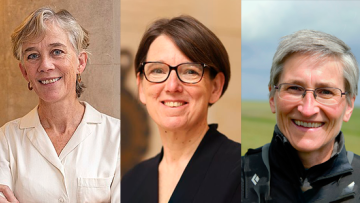13:00
Operator dynamics in Floquet many-body systems
Abstract
Random unitary circuits (RUCs) have served as important sources of insights in studying operator dynamics. While the simplicity of RUCs allows us to understand the nature of operator growth in a quantitative way, randomness of the dynamics in time prevents them to capture certain aspects of operator dynamics. To explore these aspects, in this talk, I consider the operator dynamics of a minimal Floquet many-body circuit whose time-evolution operator is fixed at each time step. In particular, I compute the partial spectral form factor of the model and show that it displays nontrivial universal physics due to operator dynamics. I then discuss the out-of-ordered correlator of the system, which turns out to capture the main feature of it in a generic chaotic many-body system, even in the infinite on-site Hilbert space dimension limit.


